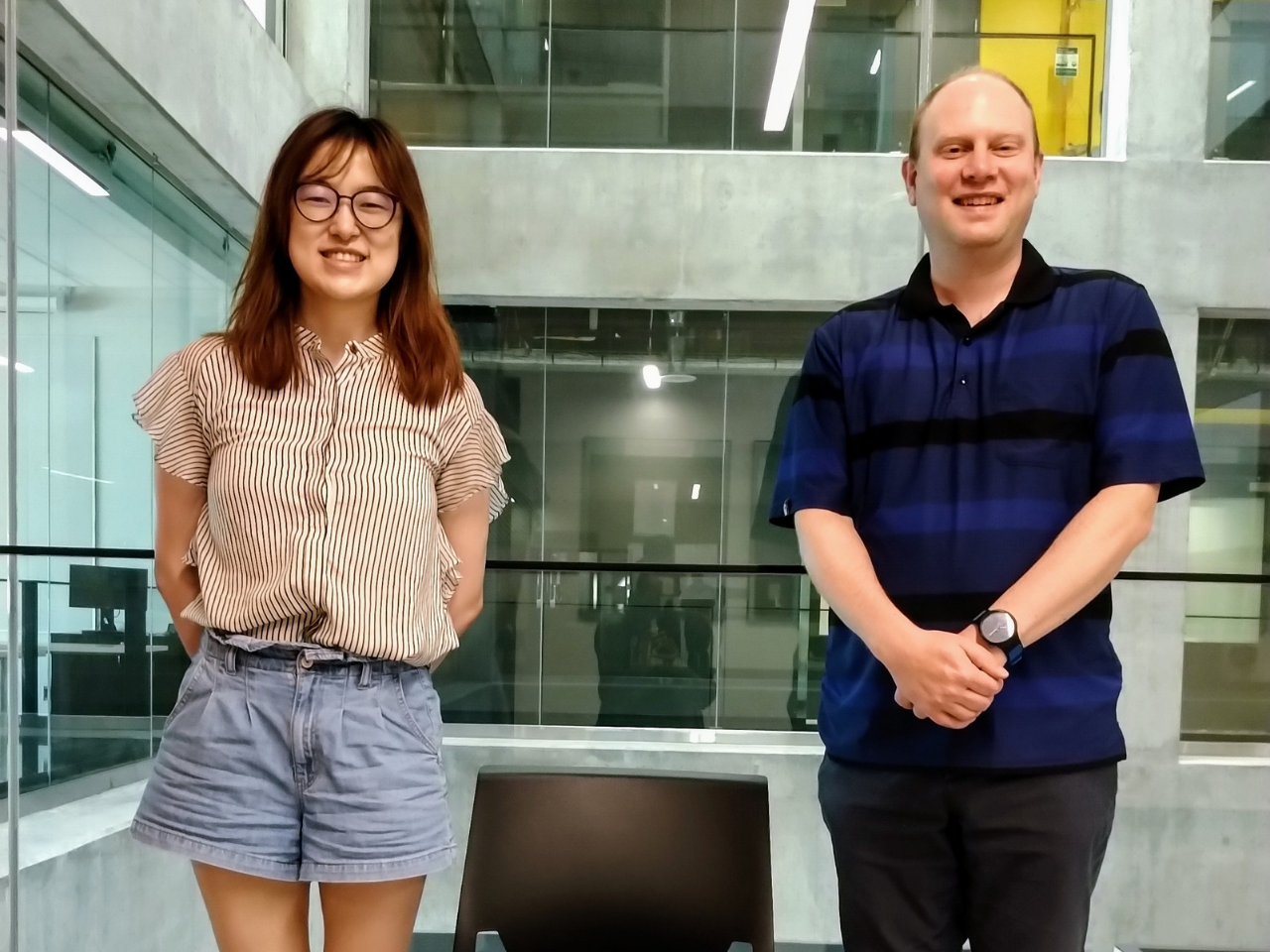This will result in future devices based on petahertz electronics, which are a million times faster than current modern computers. Such innovations require precise knowledge of the laser pulses, and in particular the resolution of electric field oscillations within a single pulse. A short electromagnetic pulse irradiating the gas molecules frees up their electrons, which then continue their motion experiencing the pull from the field of the second, “streaking” pulse. The final velocity of the electrons, measured in an electron spectrometer, can be used to reconstruct the field of the streaking pulse with attosecond precision. Under the supervision of Professor Paul Corkum, postdoctoral fellow Aleksey Korobenko demonstrated that instead of measuring the velocities of individual electrons in low-density gas samples, which requires high vacuum conditions and a complicated setup, one could simply measure the current induced in air plasma under ambient conditions. Aleksey probed this current using a pair of metal electrodes, which facilitates a simpler and faster measurement of a light wave oscillation. In addition, he developed a practical real-time method of laser characterization that can reconstruct a single laser pulse and is suitable for everyday laser tune-ups.

Aleksey is also working on a method to produce extreme ultraviolet radiation by irradiating solid crystals with intense laser pulses. This phenomenon results in electrons being pulled within the crystal in a nonlinear motion and in the generation of extreme ultraviolet (XUV) radiation. Because of its short wavelength, XUV can access extremely short time- and length-scales, unavailable to normal visible light. Developing ways to control this type of radiation will find important applications in nanoscale fabrication, where light is used to manufacture structures of nanometer size such as transistors or photonic devices, and advanced microscopy.
Throughout his postdoctoral fellowship, Aleksey received tremendous support and guidance from his supervisor Prof. Paul Corkum, as well as from their collaborator Dr. Boris Bergues from the Max Planck Institute of Quantum Optics in Germany, and from PhD student Kyle Johnston.


